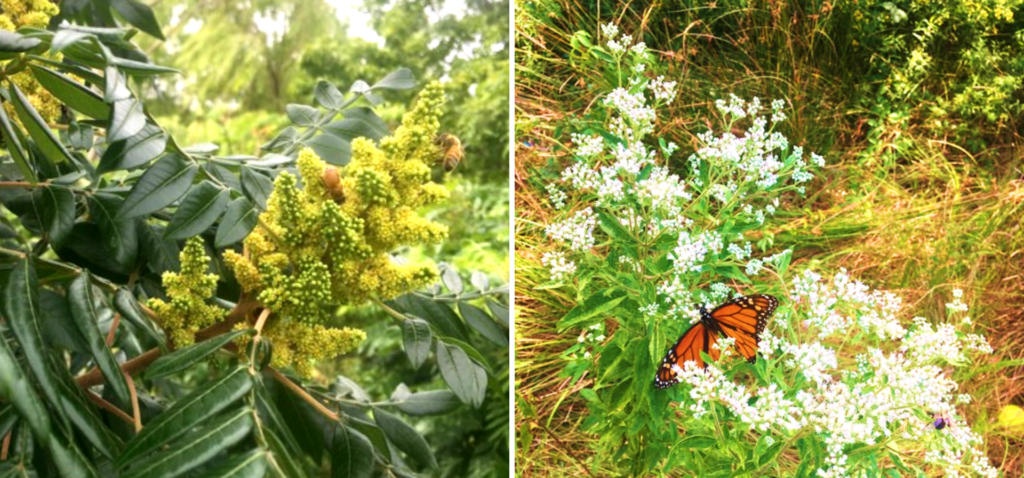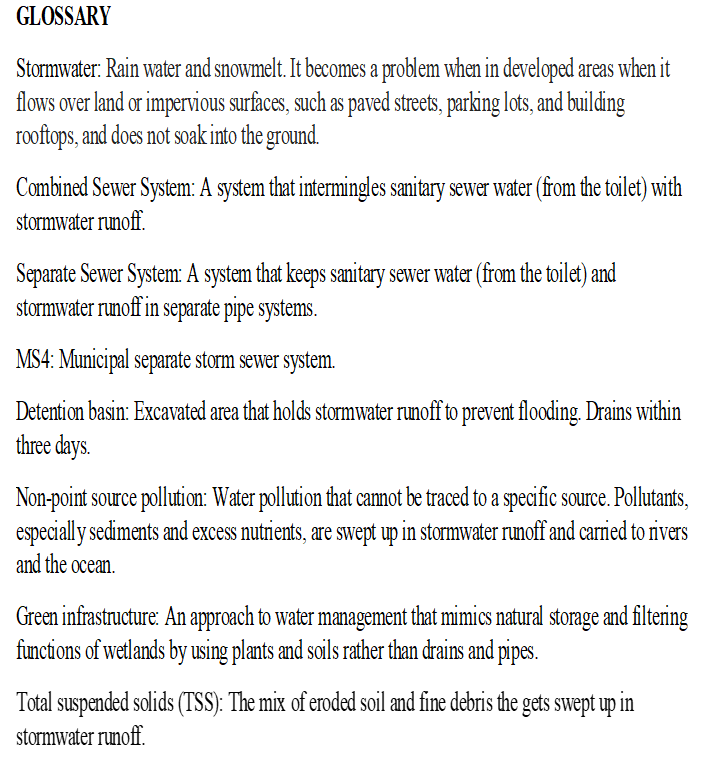Flood prevention and butterflies: The role and potential of stormwater detention basins
This is the second of three articles in a series about stormwater management by Kate Douthat, a third year PhD candidate in the graduate program of Ecology and Evolution at Rutgers. Kate’s research is examining the plant communities that have formed in urban stormwater systems. She is interested in the extensive stormwater infrastructure network in New Jersey and how we can use plants to improve water quality. Kate loves to share her enthusiasm about plants and to teach the public about the stormwater systems in our backyards. She has agreed to develop a series of informative blogs for the LRWP’s readers and will also lead our #booksfortheriver book club starting Fall 2019. You can see more of her writing about plants and water resources on katedouthatecology.com
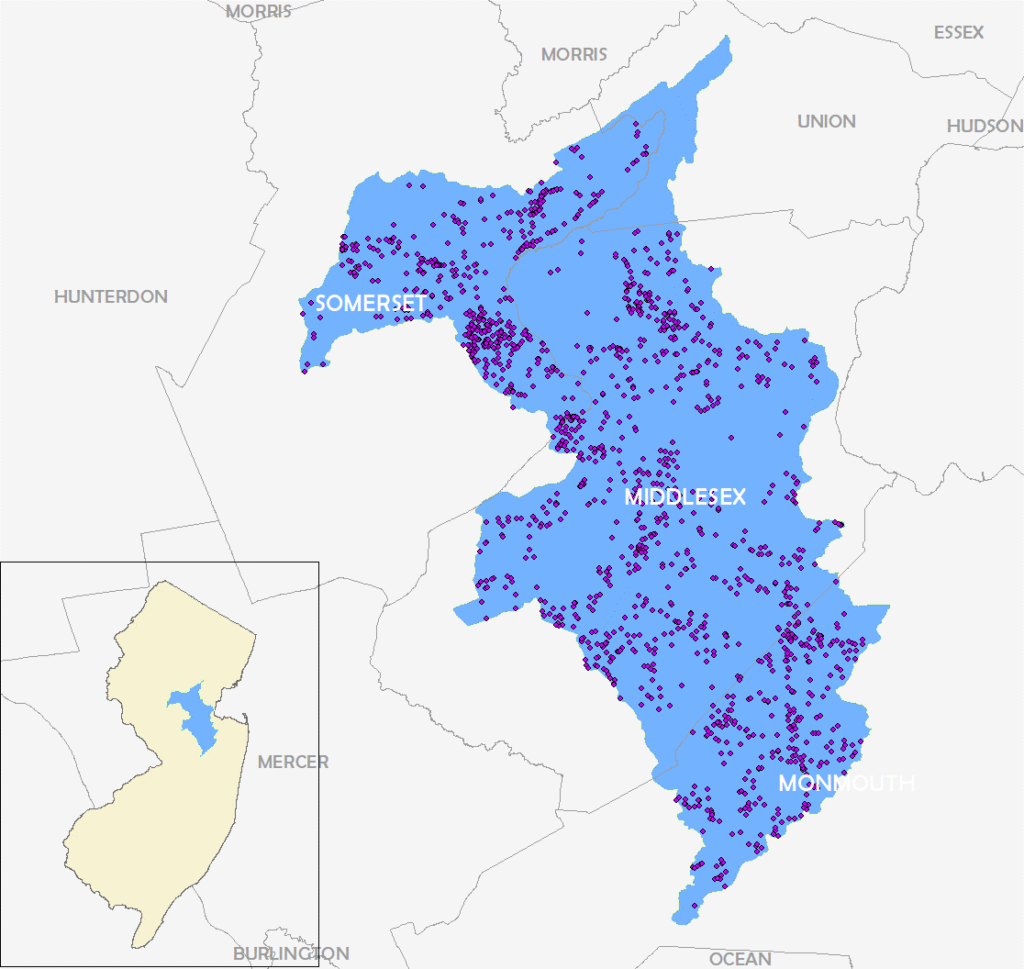
There are over 16,000 stormwater basins in all of New Jersey (https://hydro.rutgers.edu/). Locally, there are over 1500 detention basins in the Lower Raritan Watershed. Enhancing the functions of these basins represents a large-scale opportunity to restore environmental quality. Of the 16,000 basins in the state, approximately half are detention basins, meaning that they are designed to drain of stormwater within 72 hours, and remain dry most of the time. Most of these detention basins are lined with grass that is mown weekly or bi-weekly like a lawn. Some basins are lined with dense native plants that are mown only once per year instead of mown grass. Using native plants can save time and money and add badly-needed habitat for pollinators and other insects. When detention basins are lined with native plants, the thicker vegetation can also trap contaminants and prevent them from running into streams and drinking water sources. This type of approach to water management that mimics the natural water cycle is known as “green infrastructure”.
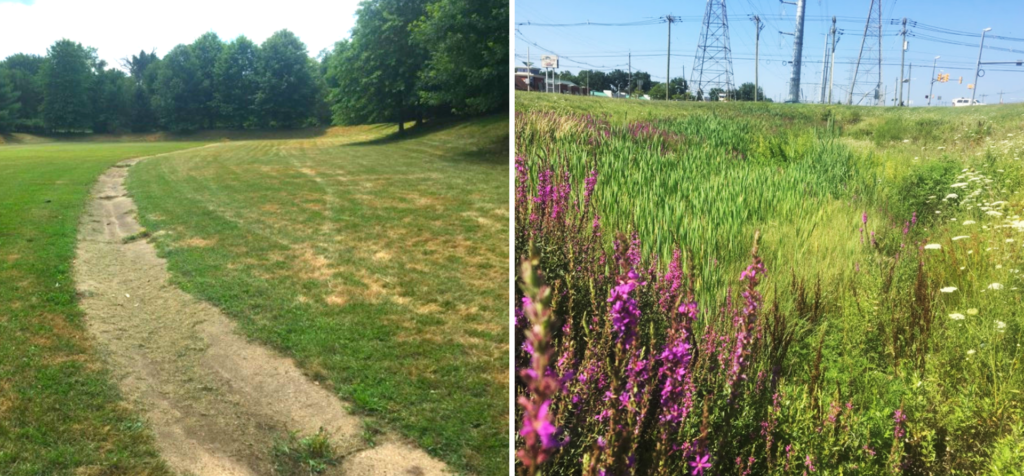
Replacing mown grass in detention basins with a mix of native vegetation in stormwater catch basins is a practice that is gaining momentum in New Jersey to prevent non-point source pollution from reaching streams and rivers. Non-point source pollution is the pollution picked up by rainwater from the ground that cannot be traced to any particular source. Contaminants of concern for drinking water and stream health include excess nutrients, which can choke waterways, and eroded sediments that are swept up in runoff. According to the USEPA, these non-point source pollutants are the leading cause of water quality problems today (https://www.epa.gov/nps/basic-information-about-nonpoint-source-nps-pollution).
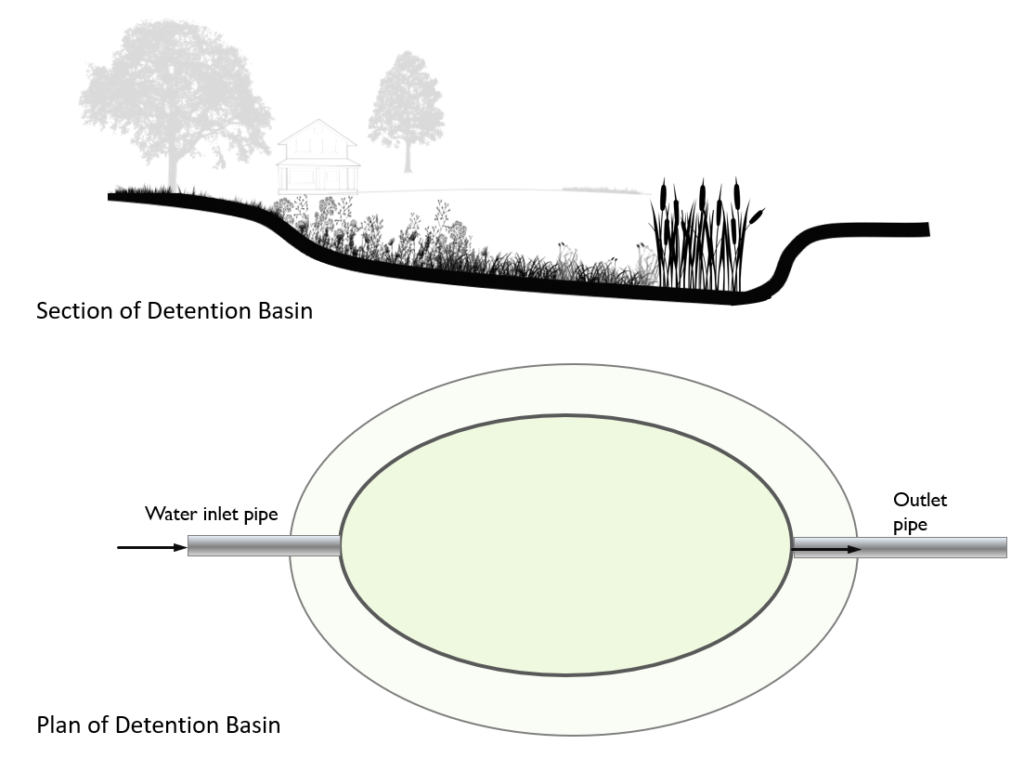
While the concept of using native plants in stormwater basins clearly has merit, we don’t yet which which plants are best suited to this application. There are plant lists out there, and we know which species live in natural wetlands; however, the plants in detention basins must survive difficult conditions including flood, drought, and polluted water. In many cases, the species that were originally planted in detention basins have died out to be replaced by species that come in as seeds from the surrounding area, so the planting lists need refinement. Research is required to determine which plants can succeed in detention basins.
We also don’t know which the best filters are. In general, denser vegetation is better at filtering suspended solids, but it may be that different plants are successful at filtering different pollutants. New Jersey estimates for the removal of suspended solids in vegetated basins range from 60-90 percent based on the design. Estimates of removal rates for nutrients vary, and this process is less well understood. When designing and building basins, it is important to use plants that both survive and provide the best filtering possible. That is why two of the basic questions of my research are: 1) What are the dominant plant species in detention basins? and 2) Which species lead to the best water quality improvement?
By understanding the plants communities that are living in in stormwater basins and how they are related to factors in the environment, my goal is to improve their design and thus improve water quality and the beauty of the landscape. Replacing mown grass with mixed native vegetation can have a cascade of positive effects, including providing islands of refuge for songbirds, pollinators, and wetland plant species in urban landscapes.
